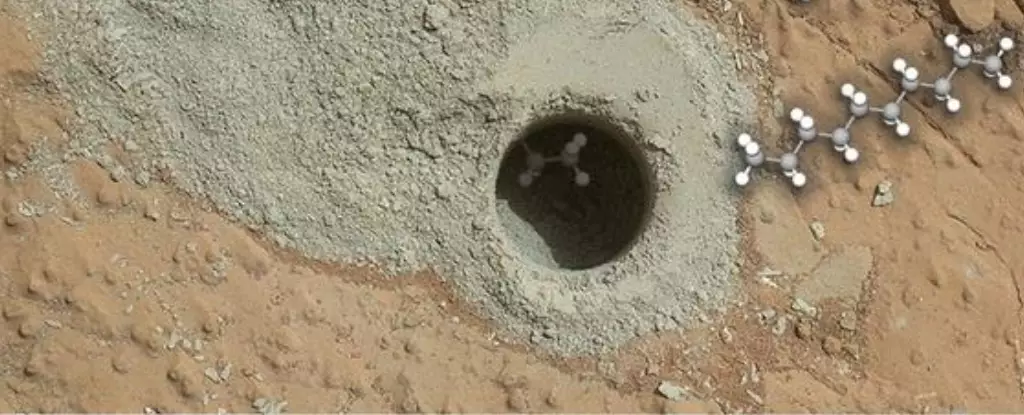In a dramatic twist for interplanetary exploration, scientists recently identified carbon chains with lengths of up to twelve atoms in a sedimentary deposit on Mars. This groundbreaking revelation, made by NASA’s Curiosity rover, has the scientific community buzzing with speculation about the potential for ancient life on our neighbor planet. For many years, the concept of Martian life has swung between skepticism and fervent hope. However, this discovery stands as a testament to the Capabilities of our exploratory technologies, raising both excitement and questions about the fundamental principles governing life itself.
The research team, helmed by Caroline Freissinet from the French National Centre for Scientific Research, appears to have struck gold in the dusty plains of Gale Crater. The implications of their findings could radically shift our understanding of life’s origins, not only on Mars but also within the broader canvas of the universe. While it’s important to note that these carbon compounds could form through non-biological processes, their very existence presents an opportunity to reconsider what constitutes ‘life’ in all its forms.
Curiosity’s Groundbreaking Work
Curiosity is designed not merely to explore but to interrogate the Martian geology for signs that life might have once flourished in its now desolate environment. The rover’s jaunts through varied sedimentary layers have revealed a treasure trove of organic compounds, from chlorinated entities to sulfur-containing molecules. This hints at a complex interplay of chemical reactions that could indeed point toward previous biological activity—or perhaps synthesis pathways not yet understood.
The research employed advanced chemical techniques to genuinely expand our understanding of Martian chemistry, examining samples from a fine-grained mudstone deposit aptly named Cumberland. The methodology used—specifically gas chromatography-mass spectrometry—allowed scientists to heat the samples to extraordinarily high temperatures, creating an optimal environment to identify these long carbon chains. As mind-boggling as it may seem, these hydrocarbons contain essential elements typically associated with life, compelling any astrobiologist to consider their significance.
The Potential for Life Beyond Earth
What makes this discovery all the more exhilarating is its potential for fueling future missions aimed at unearthing more clues from below the Martian surface, where water may still circulate in hidden aquifers. The challenge that lies ahead is monumental: distinguishing between abiotic chemical processes and those driven by biological activity. The analogy of Earth’s rich history teems with microorganisms that thrived in extreme environments could guide our understanding of similar processes on Mars.
However, the astrobiological implications are dizzying. If these carbon chains signify the remnants of life or even snapshots of organic processes that echo through time, we might be closer to answering one of humanity’s oldest questions: Are we alone in the universe? The mere notion that life—or the building blocks for it—could have existed on another planet tantalizes both scientists and dreamers alike.
Measuring the Impacts on Scientific Paradigms
While a more definitive understanding of Martian life remains elusive, the discovery urges us to rethink our definitions of life itself. The equivalence drawn between complex organic compounds found in Martian sediments and those that are ubiquitous in terrestrial biology unfolds a new dimension in the study of astrobiology. Are we reaching a juncture where we can no longer rely solely on the sediments of Earth to make sense of life’s existence? Perhaps the Martian landscape is whispering secrets that challenge our terrestrial-centric views.
The current exploration spurred by Curiosity has laid the groundwork for future space missions, effectively informing scientists about where to dig for further evidence. While we may currently be scratching the surface, metaphorically and literally, what Curiosity has unearthed challenges the imagination—filling our minds with possibilities.
As excitement builds, we’re reminded of the poignant thread connecting humanity with the cosmos. Each research milestone brings us closer to understanding not just the nature of life on other planets but also deepening our comprehension of life on Earth itself. It beckons us forward into an era where questions inspire exploration, and every small gain in knowledge invites us to ponder the vast, uncharted territories of the universe.


Leave a Reply